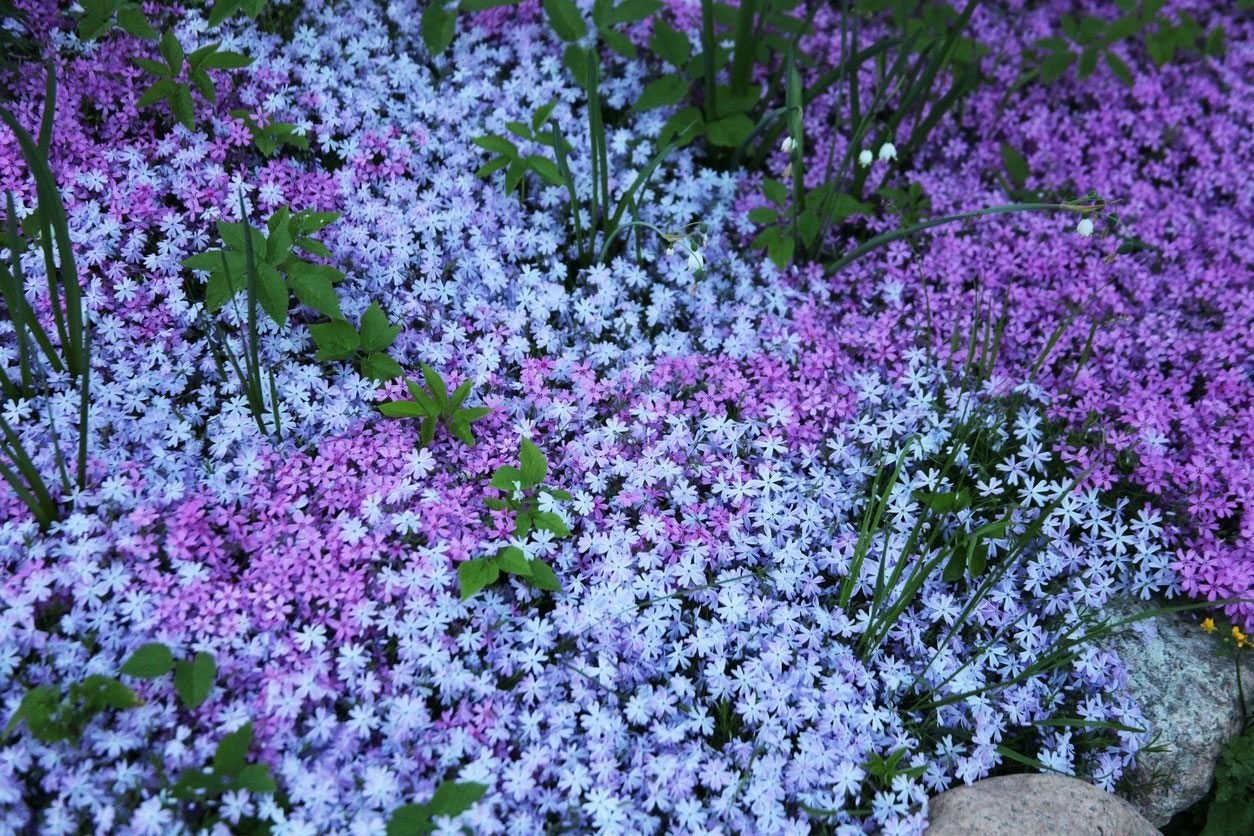Guide To Groundcover Spacing – How Far To Plant Spreading Plants Apart


Groundcovers serve a number of important functions in the landscape. They are versatile plants that conserve water, minimize soil erosion, keep weeds in check, reduce dust, and provide beauty, often in shade or other difficult areas where nothing else will grow. The tricky part is figuring out how to space groundcover plants so they fill in quickly, but optimal groundcover spacing depends on a number of factors. Read on for helpful tips on spacing for groundcover plants.
How Far to Plant Spreading Plants
As a general rule of thumb, most groundcovers do well when spaced 12 to 24 inches (31-61 cm.) apart, but when it comes to figuring the distance between groundcover plants, it’s important to consider the growth habits of the particular plant and how quickly you want to fill the space. Of course, your budget is also an important factor. For example, creeping juniper (Juniperus horizontalis) is a hardy, well-behaved evergreen that can eventually spread to a width of 6 to 8 feet (2-2.5 m.), but it won’t happen overnight. If you want the space to fill relatively quickly, allow about 24 inches (61 cm.) between plants. If you have a little more time or your budget is limited, consider groundcover spacing of at least 4 feet (1 m.). On the other hand, crown vetch (Securigeria varia) spreads quickly, and one plant can cover an area 6 feet (2 m.) wide. A distance of about 12 inches (31 cm.) between plants will create cover fairly rapidly. Another general tip on calculating groundcover spacing is to consider the plant’s maximum width at maturity, then allow that much space between plants. Allow a little more space for fast-growing groundcovers. Plant them a little closer if they’re slow growers. Keep in mind that some groundcovers that spread rapidly can become aggressive. A perfect example is English ivy (Hedera helix). While English ivy is beautiful year-round and fills in fairly quickly, it is extremely aggressive and is considered a noxious weed in certain areas, including the Pacific Northwest. Check with your local cooperative extension if you’re unsure about a plant’s invasive potential before planting in the garden.
Sign up for the Gardening Know How newsletter today and receive a free copy of our e-book "How to Grow Delicious Tomatoes".

A Credentialed Garden Writer, Mary H. Dyer was with Gardening Know How in the very beginning, publishing articles as early as 2007.